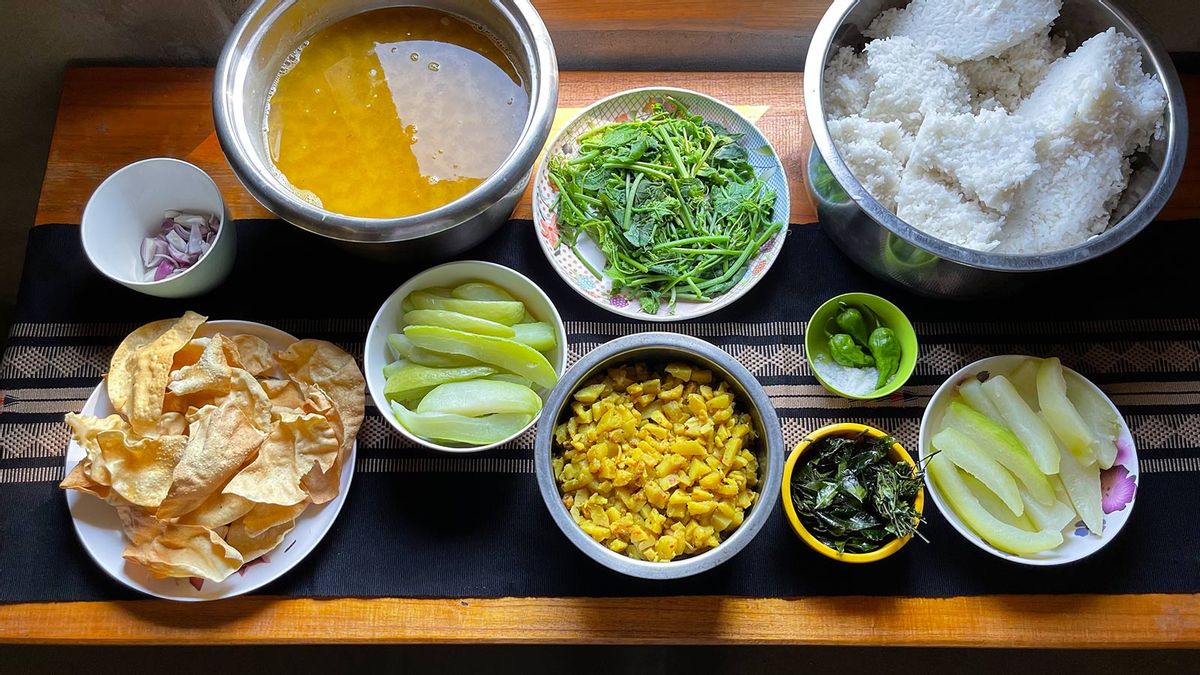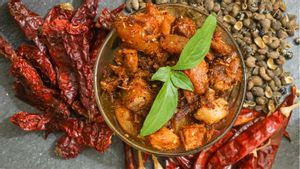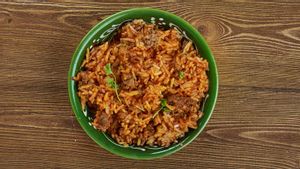When we first visited Nagaland in 2009, a visit to Kohima’s colourful Keeda Bazaar at the Supermarket was an eye-opener. The creepy-crawly insect market was literally buzzing—wasps, loungu (wood worms), iri puka (silkworm larvae), eels in tubs, frogs inside plastic packets, snails and insects hatching in hives; this was ‘live’ action at its best. It was fascinating to know that in these parts, protein-rich grub (worm-like larva of insects) was actually grub! Local ladies chewed betel leaves and casually drew any errant grub that crawled away, back onto the green banana leaf plate to rejoin its brethren. We were curious what they tasted like but were disappointed to learn that locals bought them fresh and cooked them at home and that it wasn’t easily found on menus of local restaurants.
However, we got our chance last year in October during Log & Drum Naga Land—a 12-day extreme terrain self-drive expedition organised by off-road specialists Wander Beyond Boundaries. Nagaland is home to 16 tribes, each with their distinct language, attire, culture, and cuisine. Expedition leader Nidhi Salgame assured us that we would surely get an opportunity to try local flavours as we were staying at homestays in some places. We flew into Dimapur and checked into Niathu Resort for the flag off as we took the off-road to Kohima via Nuiland and Zhadima.
Our first taste of Naga cuisine
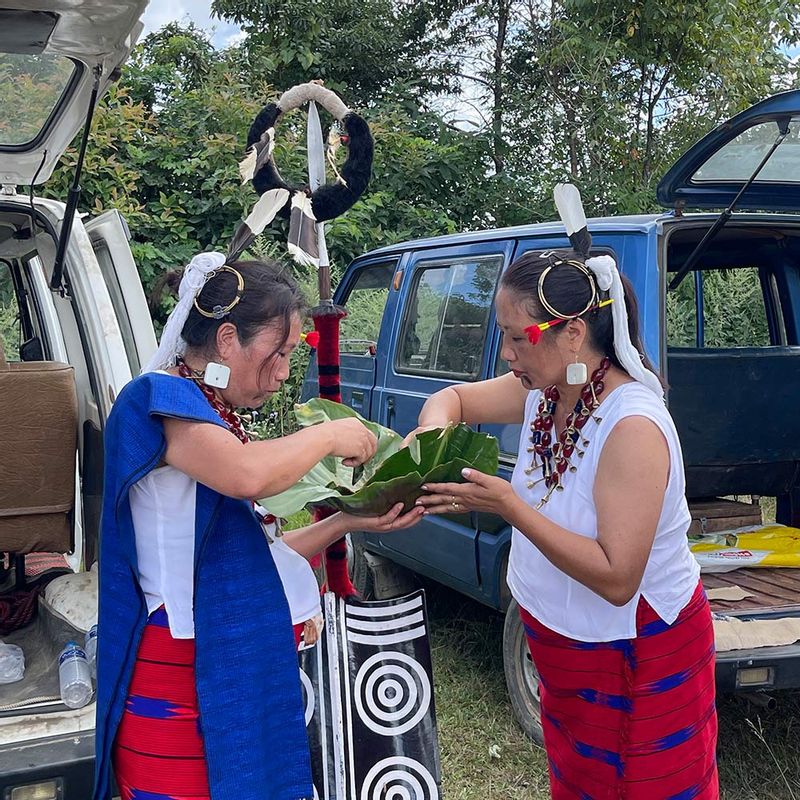
At a helipad on the outskirts of Kigwema, we witnessed a cultural performance by the Ao, Angami and Sümi/Sema tribes. It was here that we got our first taste of Naga cuisine. After the scintillating martial dances, we hung out with the friendly Ao gang from Waromung, a village 53 km from Mokokchung, who invited us to share their meal. They opened their leaf poultices to unveil amrusu or amsu, a savoury porridge made of rice flour, meat, garlic and ginger. It was like congee, a comfort food that can be made with chicken or duck—though this version had chunks of pork and liver. The red chilli paste added bite as we scooped it up with a leaf spoon. But this was merely an appetiser!
Continuing to the morung (male dormitory) at the Angami village of Kigwema, we were treated to a traditional meal organised by our host Sobu and four young ladies Kezevino, Ketholeno, Nipeno and Zevikhono. They had prepared an elaborate spread and laid it out on the circular terrace. There was local red rice, thevotse kase (pork with bamboo shoot curry), chicken fry, bamboo shoot with potato, pumpkin fry, steamed squash, local rajma, and sticky rice which we heartily stopped out into our beautifully crafted gleaming wood plates. The standout dish was the signature Angami specialty galho, a savoury rice porridge with wild greens.

Surprised to find rajma on the menu, we were even more astonished to learn that there are over 22 varieties of Kholar beans in Nagaland. The Yimchunger tribe has interesting local names in their dialect based on the shape and appearance of the beans - amurak (black), jepshiak (yellow), moho (irresistible) and amurum (dog’s liver)! In Nagaland, rice is the main staple and pork is the meat of choice, usually stirred into Naga style pork curry, often with the addition of bamboo shoots. Besides agriculture, the Naga tribes have traditionally supplemented their food through hunting, fishing and foraging. The preferred method of cooking is usually boiling or steaming with very little frying in oil.
A treasure trove of indigenous veggies
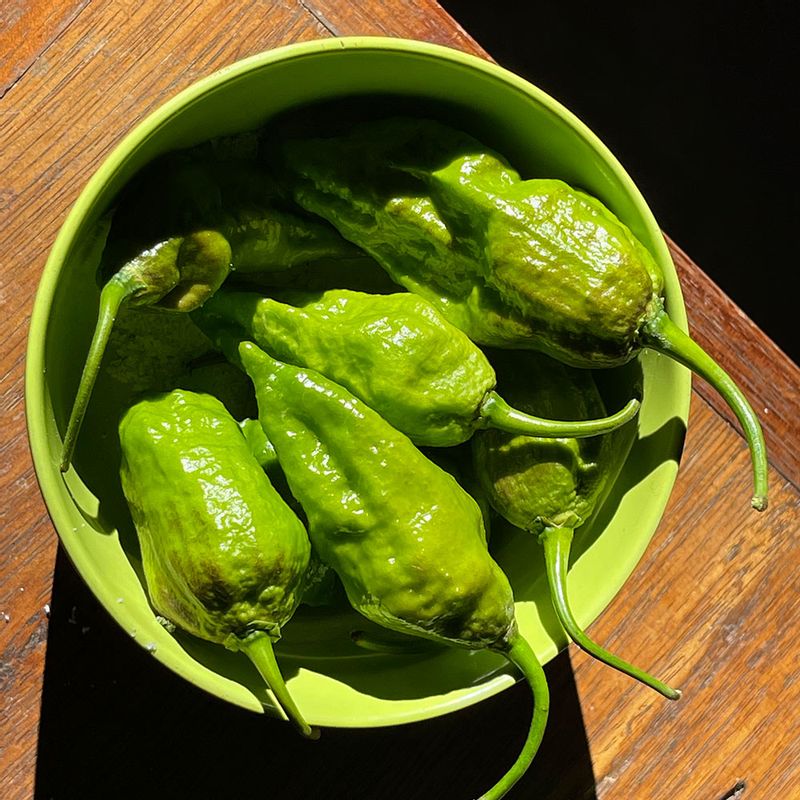
Local markets teem with endemic fruits and indigenous vegetables like kovier or Naga lasoon (spring garlic), Naga chives, Naga basil and Naga ginger. Perhaps the most famous of these native ingredients is the Naga morich or chilli (Capsicum chinese), better known as King Chilli or Raja chilli. It is also called Tezpur chilli and Bih zolokia (poison chilli) in Assam and is a close cousin of the Bhut Jolokia. ‘Bhut’ actually refers to Bhutan, but has been romanticised into ‘Ghost Pepper’ as it is one of the hottest chillis in the world—clocking over 1 million Scoville units on the heat index.
The Naga chilli received a GI (Geographical Indication) tag, just like the Naga tree tomato or tamarillo, an egg-shaped tomato with heart-shaped leaves native to the Naga Hills. Locally called Sei Bangenuo, Asü Beghüna, Si Binyano, Shokho kakhrie, and Khwtidi in local dialects, the succulent fruit can be eaten raw with rock salt, made into a salad, put into pork curry, or made into khuvie tathu, a piquant chutney with onions.
‘Grub’ on our plate
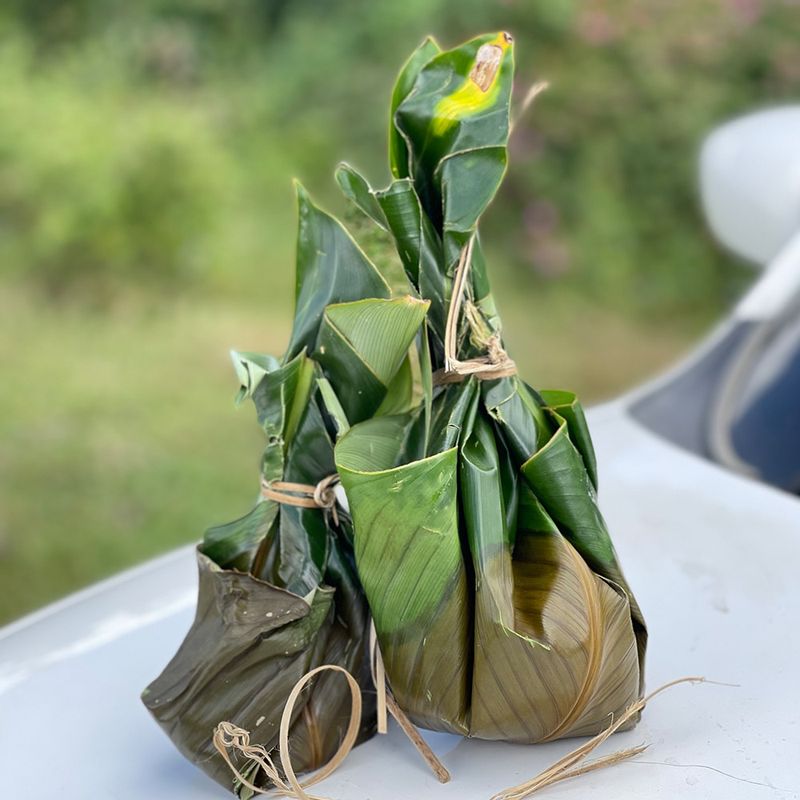
From Kohima, we headed to Shilloi Lake—the largest natural lake in Nagaland in the remote southern part of Phek district in the Myanmar border. The arduous 17 hour drive took us via Pfutsero, the highest town in Nagaland and the historic WWII battle ground of Jessami. Skirting Manipur, we crossed Meluri and stopped for lunch at Akhwego at the house of the village chairman Nienthso. Besides rice, dal, potato fry and steamed dishes of pumpkin leaf, white pumpkin and squash—the spread included stir-fried iri puka or silkworm larvae (Philosamia ricini). Finally, our long cherished dream of tasting wiggly worms was realised.
Crunchy and packed with protein, it is also popularly made into pickles. We were welcomed into the kitchen to see the live silkworm in their cocoons. The typical sooty Naga kitchen had strips of meat (pork and venison), tree tomatoes and Raja chilli smoking above the wood fire. Corn and other seeds were left near the fireplace or sun dried to keep it safe from insects until the next sowing season. Smoking meats and vegetables intensifies the taste and adds a unique flavour profile. Smoked pork can be used for curry, pickle, and Ki Baa (smoked pork salad).
We reached Shilloi Lake late at night and were treated to a comforting bonfire and some more local fare—a delicious deep fried fish, chicken with bamboo shoot and awoshi kipiki axone (smoked pork curry). Axone or akhuni (fermented soyabean cake/paste) is a highlight of Naga cuisine and neighbouring North-eastern states like Meghalaya, Mizoram, and Manipur. The word comes from the Sümi dialect and is derived from Axo meaning ‘smell’ and ne or ‘strong’—the strong smelling ingredient inspired a Netflix movie on the culinary travails of a bunch of friends from the North East in Delhi.
Axone and other fermented foods of Nagaland
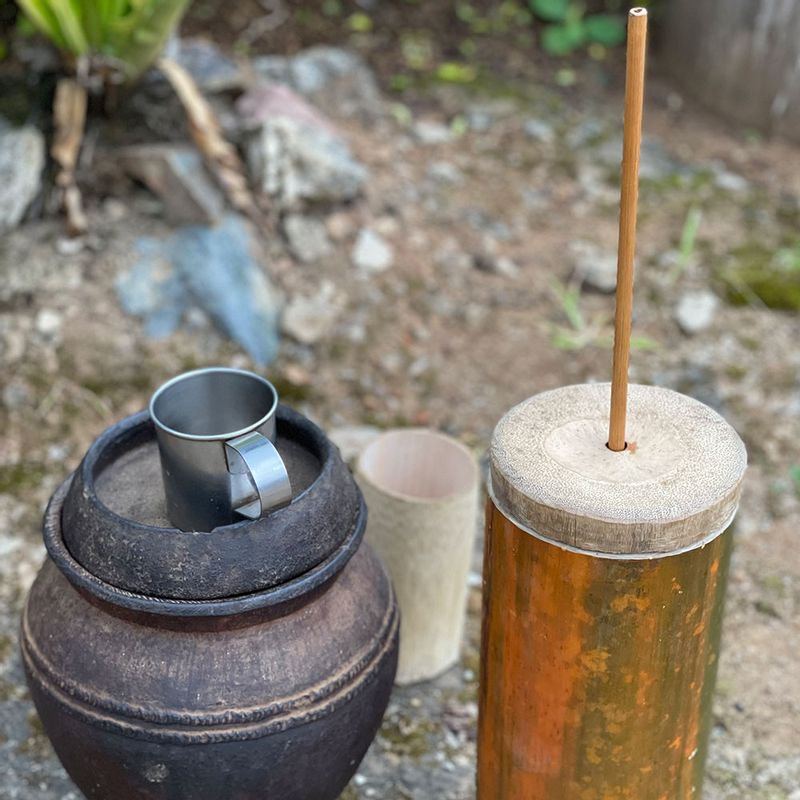
Making axone is an elaborate process. Soya bean is soaked overnight, boiled till it’s soft, the water drained and the soya beans put in bamboo baskets lined with banana leaves. This is placed over the fireplace to kickstart the fermentation process. The soya beans are then mashed, made into cakes or paste, wrapped in banana leaves and kept near the fireplace to ferment further, which adds the signature umami taste. Axone is used for fish, pork and chicken curries, as well as chutneys.
Fermented foods are a hallmark of Naga cuisine. In May-June, white tender bamboo shoots are grated, bottled and left to ferment. After a few weeks, the bamboo releases an acerbic liquid, which is stored separately and added to dishes while the fermented bamboo is sun-dried into bastenga, literally ‘sour bamboo’. Ziang-sang is a fermented leafy vegetable product made from withered mustard leaves or hangam, which are crushed and soaked in warm water for 10 days. Once it's semi-solid, the water is drained and the paste is sundried for four to five, days and used as a soup with rice.
After breakfast of puri with potato-pumpkin bhaji and a euphoric performance by the Pochury tribe, we took a treacherous off-road route from Shilloi via Mutingkhong, Amikioro and Moya to Kiphire. En route we passed a few gun-toting hunters despite several signboards warning against illegal hunting and fishing. Nagas are a martial lot with a fondness for all kinds of bush meat—yet, there’s plenty of vegetarian fare on offer. Squash, pumpkin, gourds, beans, colocasia, eggplant, gooseberry, and a plethora of wild greens, fruits and berries are on display at colourful vegetable shops across Nagaland. Chickens and crabs are stored in exquisite woven cane baskets. At Tsatongse Memorial Guest House in Kiphire we tried delicious pork curry and another unusual local vegetable — Likok/Titaguti (Solanum indicum) or bitter eggplant. The small brinjal is made into a stir fry and relished for its unique bitter taste profile. All along we spotted several ‘rice hotels’—local shacks serving rice with curries and local vegetables. It’s near impossible to find roti or chapati on the menu in Nagaland.
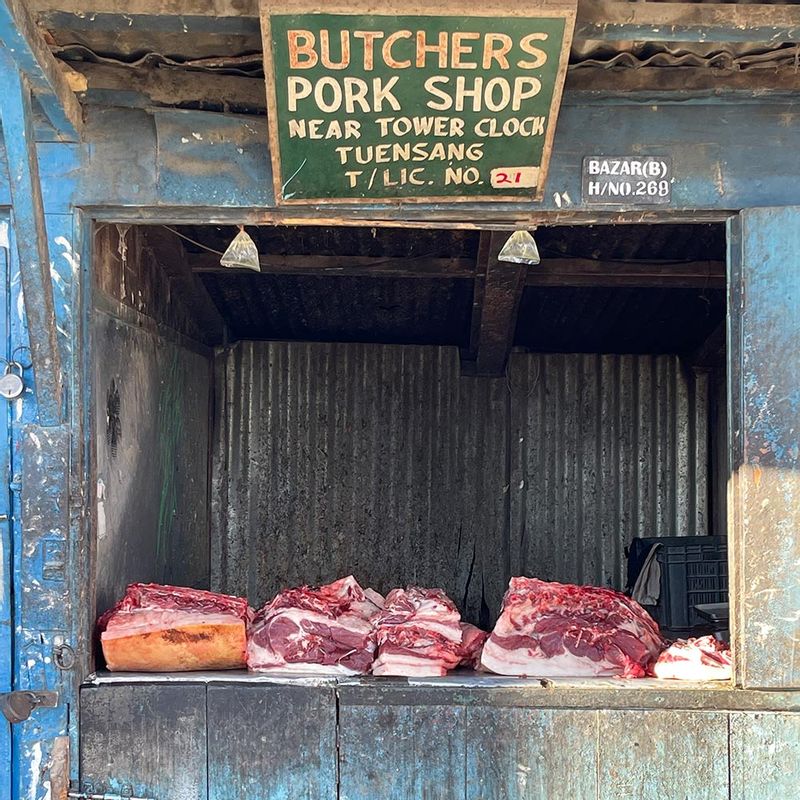
Driving via Tuensang, we reached the hilly Konyak country of Mon. Nagaland is a mountainous tract draped with forests and locals consume a lot of wild greens, many packed with medicinal benefits. Mejenga patta (Zanthoxylum oxphyllum) or Sichuan pepper leaves are used fresh or dry with bamboo shoot and pork—its alpha hydroxy compound reduces stomach and skin pain. Naga dhania (Eryngium foetidum) or saw-toothed/Thai coriander is much stronger than ordinary coriander—its chemical compound eryngial is the traditional cure for fits and fevers. At Mon market we spotted vegetable vendors selling a wide variety of greens like pumpkin leaves, wild curry leaves, and fiddlehead fern or dhekia zaak with its tendrils curved like the ends of a fiddle or violin. Lai patta (Brassica juncea) or vegetable mustard leaves are commonly blanched into a salad or cooked with pork. Leaves of edible yams are yellowed and ground into a paste with ginger, chilli, and salt—these are made into cakes and dried over a fire or in the sun, and used as a condiment called anishi which is cooked with pork.
Our base in Mon was Teipha Cottage, run by Aunty Tongpangla and her daughter-in-law Mentoh (Atu). We had the best pork curry of the trip here. From Mon we drove to Hongphoi, a village of the Konyaks, the fiercest of Nagaland’s headhunting tribes. The final leg was an excursion to Longwa to Chief Angh’s house straddling the Indo-Myanmar border. As was customary, we carried a bag of rice as an offering for the chieftain Tonyei Phawang. Preparations were underway in the long house for the Konyak martial dance followed by a traditional lunch. We watched the kitchen crew cleaning rice, and crushing ginger and garlic as a pot simmered on the wood fire. We tried to pick up local Konyak names, like waaw (squash) which was being steamed. River fish (nya) from Tagakh, a stream from Burma, was cooked with machham (bamboo shoot), besides an unusual stir fry of pantyu (mushroom) and gakha (wild berry). Traditionally all celebrations and festivals call for zutho or thutse (rice beer). But we gave it a miss as we didn’t want to drink and drive. It was a long ride via Tizit to Dibrugarh and we picked up some yomi (dry bamboo) and Raja chilli paste on the way—a dash of tantalising flavours to keep the memories of Nagaland alive.
Fact File
Wander Beyond Boundaries
Ph: +91/97170-02058
www.wanderbeyondboundaries.com
Getting there
Dimapur has the only railway station and airport in Nagaland, from where Kohima is 70km away.
Where to Stay
Niathu Resort, Dimapur
7th Mile, Chumukedima
Ph: +91/84159-21118
Niraamaya Retreats Aradura, Kohima
New Minister Hill, Aradura Hill
Ph: +91/80451-04510, +91/81198-90194
Shilloi Lake Resort
Phek District
Ph: +91/96121-11320
Tsatongse Memorial Guest House, Kiphire
Ph:+91/89744-50992
KC Lodge, Tuensang
Opposite St. Joseph School, Near DC Office
Ph: +91/96120-11887
Teipha Cottage, Mon
Ph: +91/94364-33782
Hotel Tea County, Dibrugarh
Convoy Road, Chowkidinghee
Ph: +91/70860-61222,+91/75780-10089
For more information, visit the Nagaland Tourism website.
Anurag Mallick and Priya Ganapathy are travel and food writers ‘loosely based’ in Bengaluru. They’ve authored guides and coffee table books including ‘Southern Comfort: Southern American Soul Food’ a cookbook for the USDA, set up the award-winning restaurant Oota Bangalore and curated the India episode of Gordon Ramsay: Uncharted, Season 2. They run Red Scarab Travel & Media, customizing solutions for the hospitality industry and feature as ‘Dude aur Deewani’ in a food-based infotainment show for Zee Zest.


